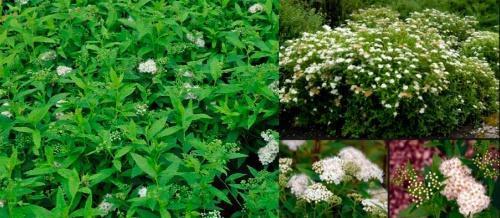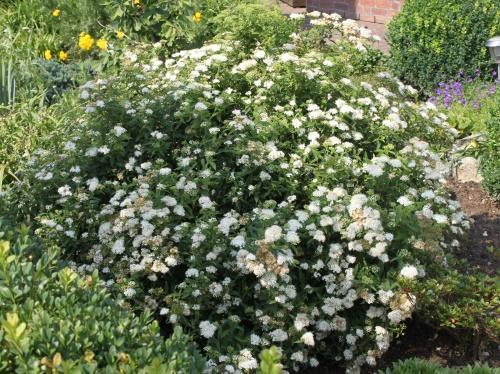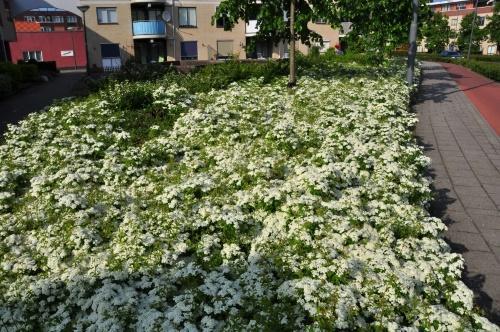Compact and snow-white Japanese spirea Albiflora

The beauty spirea is used with pleasure for landscaping not only public parks, but also private estates. Sprawling bushes, rather high or, on the contrary, quite compact in size, besides, they are still abundantly and beautifully blooming, and unpretentious - isn't this the dream of every grower? A species of spirea called Albiflora enjoys special love: unlike most species, the buds of which are painted in pink tones, Albiflora blooms with delicate white inflorescences and has a modest size.
What does the plant look like?

Spirea Japanese Albiflora (as it is correctly called) refers to dwarf varieties of shrubs: the total height of an adult bush rarely exceeds 0.8 m, more often half-meter specimens are found. The crown of the bush is spreading and lush, consisting of reddish twigs and many elongated green leaves.
Even after the end of flowering, Albiflora retains its decorative appearance due to the yellow-orange color of the leaves, which replaces the green color in early autumn.
Salient features varieties can be called:
- abundant flowering (from the second half of summer to autumn, the bushes are almost completely covered with white umbrellas of inflorescences, emitting a delicate sweetish aroma);
- compact size;
- no special requirements for the composition of the soil;
- good frost resistance.
Spirea Albiflora grows very slowly: the annual growth is a maximum of 10 cm.
Growing features
The beautifully flowering shrub of the Japanese spirea Albiflora is quite undemanding and feels great both in a sunny place and in partial shade. It may well develop on poor soils, subject to periodic feeding, but it prefers fertile soil - there the growth rate increases slightly, and the bushes themselves look more beautiful. Spirea loves moisture, but it is necessary to ensure that the water does not stagnate at the roots, otherwise the plant will begin to ache.
But what spirea does not tolerate is droughts and in hot summer, when there is no natural precipitation and artificial irrigation, it can die.
Albiflora lends itself well to formation, therefore it is desirable in early spring cut spirea to stimulate tillering, as well as remove damaged branches and give the desired shape.